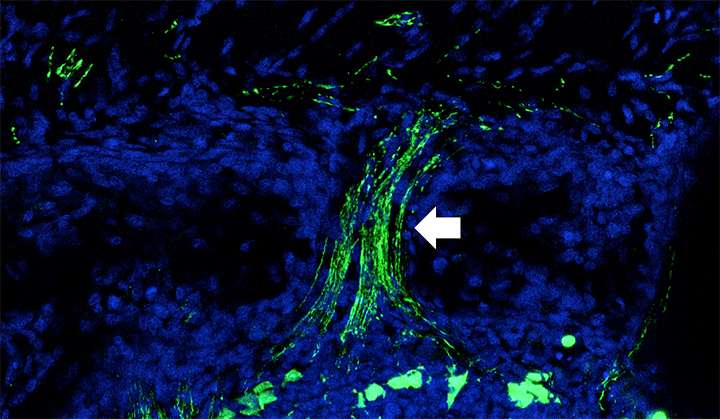New olfactory sensory neurons (in green) begin to form the olfactory nerve (solid arrow) after three days.
Smell is the only sensory system with a back up, which throughout most of adult life forms new sensory neurons that express specific odor receptors. Now Yale researchers led by Charles Greer and Diego Rodriguez-Gil have discovered a way to track every step of the process over time.
The findings shed light on all sensory neural development and perhaps ways to identify mechanisms that can repair damage to the central nervous system, which generally lacks the ability to replace damaged parts.
The team found, for instance, that the 1,200 different types of odor receptors do more than just detect smells in the environment, but they also act as a sort of molecular glue, expressed late in maturation, that locks axons into proper targets in the brain.
The study appears the week of April 20 in the Proceedings of the National Academy of Sciences.
More information: Odorant receptors regulate the final glomerular coalescence of olfactory sensory neuron axons, Diego J. Rodriguez-Gil, PNAS, DOI: 10.1073/pnas.1417955112
Journal information: Proceedings of the National Academy of Sciences
Provided by Yale University






















